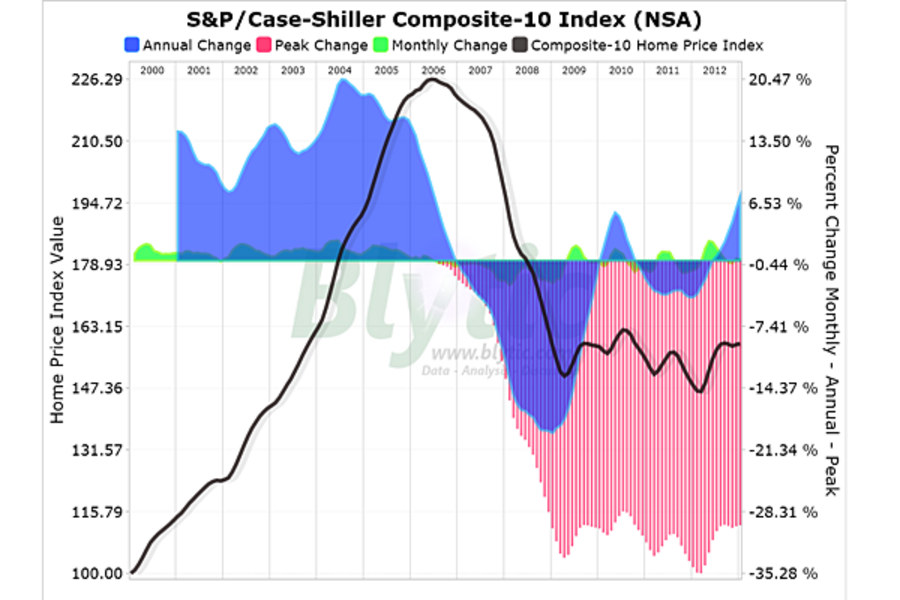Case-Shiller: Home prices up slightly in January
Today's release of the S&P/Case-Shiller (CSI) home price indices for January reported that the non-seasonally adjusted Composite-10 price index increased again rising a slight 0.16% since December while the Composite-20 index increased 0.13% over the same period.
The latest CSI data is beginning to demonstrate more resiliency than seen in recent years as prices continue to move up, even just slightly, in the face of typical lower seasonal transactions.
If this trend continues, rather than declining as has been seen in past years, prices may just remain flat into the February-March release in advance of the typical uplift from the more active spring transactions.
The 10-city composite index increased 7.25% as compared to January 2012 while the 20-city composite increased 8.08% over the same period.
Both of the broad composite indices show significant peak declines slumping -29.86% for the 10-city national index and -29.24% for the 20-city national index on a peak comparison basis.
To better visualize today’s results use Blytic.com to view the full release.






